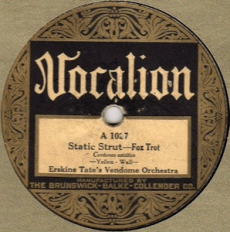
Daily Dose Of Jazz…
John L. Thomas was born September 18, 1902 in Louisville, Kentucky but relocated to Chicago, Illinois as a child where he received his formal education. He slid into on-stage trombone performances with the Clarence Miller Orchestra around 1923. Between 1927 and 1928 he worked with Erskine Tate, leading to Louis Armstrong’s Hot Seven. He continued freelancing with a wide range of classic jazz bandleaders Freddie Keppard, Tate and Reuben Reeves.
He was briefly with McKinney’s Cotton Pickers in the Thirties and in 1937 he was part of a touring revue fronted by pianist and singer Nat King Cole. Thomas was once again with Tate as well as drummer Floyd Campbell’s outfit. During WWII he gave up his trombone case for a tool box in a defense plant.
His performance hiatus from playing took place prior to dropping out completely during the ’50s, as he did gig once again in a group led by guitarist Walter Dysett in 1944. Trombonist John L. Thomas died on November 7, 1971 in Chicago, Illinois.
More Posts: history,instrumental,jazz,music,trombone
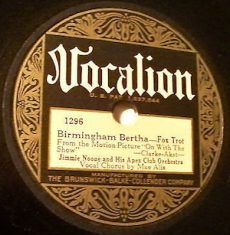
Daily Dose Of Jazz…
May Alix was born Liza Mae Alix on August 31, 1902 in Chicago, Illinois and began her career as a teenager after winning a talent contest. She performed with the Jimmie Noone band in the clubs around the city. She later worked with bandleaders Carroll Dickerson, Duke Ellington, and Luis Russell.
She earned the nickname “Queen of the Splits” for the dance choreography included in her show, where she would do a split for every dollar thrown by a customer. Soon she joined Ollie Powers as a duo performing in cabarets.
1926 saw her recording with Louis Armstrong and His Hot Five, one being Big Butter and Egg Man, which became Armstrong’s first chart hit. She went on to collaborate with Jimmie Noone on half a dozen recordings for Vocalion Records at the end of the decade including Ain’t Misbehavin, My Daddy Rocks Me, and Birmingham Bertha/Am I Blue?.
During the 1930s and early 1940s, she performed mainly in New York City. Jazz singer Alberta Hunter sometimes recorded under the name “May Alix”, with the permission of the real May Alix.
Vocalist May Alix, who left show business in 1941, died on November 1, 1983.
More Posts: bandleader,history,instrumental,jazz,music,vocal
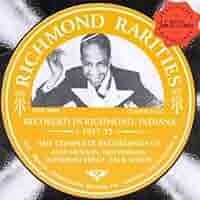
Daily Dose Of Jazz…
Alphonse “Alphonso” Trent was born on August 24, 1905 in Fort Smith, Arkansas and played piano from childhood, working in local bands in Arkansas through his youth.
He led his first band in the mid-1920s, possibly as early as 1923. In 1924 he played with Eugene Cook’s Synco Six, then took over leadership of the band until 1934. They played mostly in the American South and Midwest, as well as on steamboats.
Despite success in New York around 1930, Trent chose not to work further on the East Coast. He left music in the mid-1930s but returned with another band in 1938. His sidemen included Terrence Holder, Alex Hill, Stuff Smith, Snub Mosley, Charlie Christian, Sweets Edison, Mouse Randolph, and Peanuts Holland.
As a leader he only recorded eight sides: four in 1928, two in 1930, and two in 1933. His small recorded legacy has made him a somewhat obscure figure today, but the sophistication of his arrangements and the precision with which they were executed inspired awe in contemporaries.
Pianist and territory band leader Alphonso Trent, who performed in the biggest and finest hotels in the South, died on October 14, 1959.
More Posts: bandleader,history,instrumental,jazz,music,piano
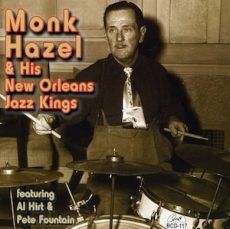
Daily Dose Of Jazz…
Monk Hazel was born Arthur Frank Hazel to a drummer father on August 15, 1903 in Harvey, Louisiana. Early on he played drums with Emmett Hardy, who gave him his first cornet, and then with Stalebread Lacombe. In the 1920s he worked with many bands including the Halfway House Orchestra led by Abbie Brunies, Tony Parenti with whom he recorded in 1928, and Johnny Wiggs.
From the late 1920s to the early 1930s, Hazel led his own Bienville Roof Orchestra which played atop the Bienville Hotel at Lee Circle, and made recordings in 1928 and then spent time in New York playing with Johnny Wiggs, Jack Pettis and with his own group from 1929 to 1931.
Hazel relocated to Hollywood in Los Angeles, California for a period working with Gene Austin but eventually returned to New Orleans, Louisiana performing with Joe Caprano in 1937 and the Lloyd Danton Quintet. He spent 1942-43 in the Army and then worked for a time outside of music.
During his final twenty years, Hazel was once again active in New Orleans, recording with his own band in 1945 and performing with Sharkey Bonano from 1949 to 1952, George Girard, Mike Lala, Santo Pecora and virtually every other important name in New Orleans jazz.
As a leader, Monk recorded four titles in 1928 for Brunswick Records and a full album for Southland Records in 1954; Pete Fountain and Al Hirt were among his sidemen on the latter recording.
Drummer and cornetist Monk Hazel, who occasionally took cornet and mellophone solos, died on March 5, 1968 in New Orleans.
More Posts: bandleader,cornet,drums,history,instrumental,jazz,music
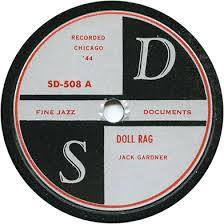
Daily Dose Of Jazz…
Francis Henry “Jumbo Jack” Gardner was born in Joliet, Illinois on August 14, 1903. In the early-1920s he played locally in Denver, Colorado with Doc Becker’s Blue Devils, Boyd Senter’s band and others.
Moving to Chicago, Illinois in 1923, he led his own band in addition to playing with musicians like Wingy Manone, Jean Goldkette, and Gene Austin. He remained in the city through 1937, playing with Jimmy McPartland in 1936.
When he rellcated to New York City he began associations with Sandy Williams’s orchestra and Harry James, but returned to Chicago early in the 1940s, where he led his own group. In 1944, he recorded with Baby Dodds.
He spent much of his later life playing in Dallas, Texas, where he died in 1957. Gardner’s compositions include the song Bye, Bye, Pretty Baby, co-written with George Hamilton.
Pianist Jack Gardner died on November 26, 1957 in Dallas, Texas at the age of 54.



